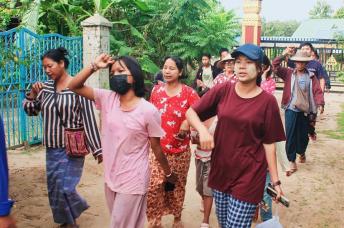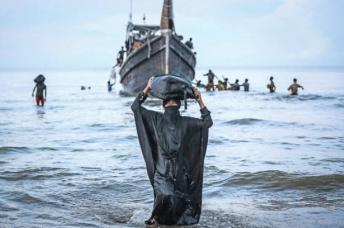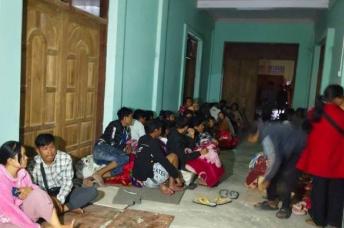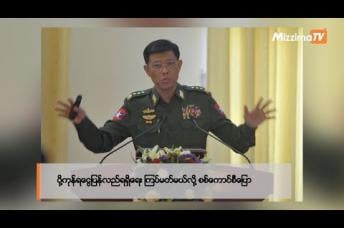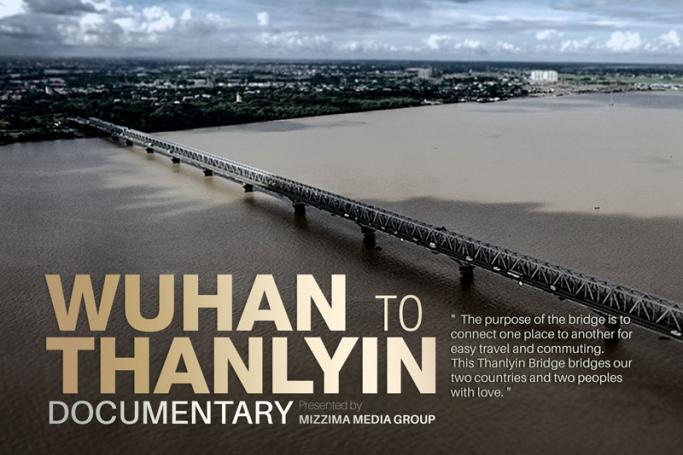A major China-Myanmar bridge project proved a prime example of cooperation
The Thanlyin Bridge which crosses the Bago River and connects Yangon and Thanlyin has proved a milestone in the enduring China-Myanmar relationship. The construction of bridge carried out with Chinese financial and technical assistance was started in 1985and completed in 1993 and it opened in the same year. The total cost of the bridge was 1.65 billion kyat, including a 207 million Yuan interest-free loan from China.
This was the first major construction project where China and Myanmar worked together. In particular it was groundbreaking in helping Myanmar engineers learn from their Chinese counterparts, an empowering process that helped Myanmar’s construction sector as the country was gradually developing.
The total length of the bridge is 2.2 kilometres and it has two traffic lanes, two pavementsand one rail track. Highway 6 goes over the bridge and connects Yangon with the Thilawa port and Thanlyin Industrial Zone. The bridge has proved transformative in not only allowing local people ease in crossing the river – previously a tedious process of using ferries - but also in improving trade and commerce, a game-changer for the region.
A key part of the process over the eight-year construction period involved the empowerment of Myanmar engineers who received hands on training in terms of the planning and the execution of the project.
Memories of the project
Thanlyin Bridge is not only the milestone of Sino-Myanmar friendship but also it left unforgettable memories for the engineers from both countries.
Mr. Li Zhou Xing is a Chinese bridge construction expert who helped design the Thanlyin Bridge. He led the construction project and took responsibility for the difficulties encountered erecting the bridge.
Now in his eighties, he lives in Wuhan, China. During the Thanlyin Bridge project, there were one team leader and assistant leaders totaling five in a Chinese bridge expert team but now only two including Mr. Li remain alive.
Speaking to Mizzima at his home in Wuhan, Mr Li spoke fondly of the cooperation between the two teams of engineers.
“The Myanmar engineers learned well from us,” Mr Li said. “We could overcome all difficulties throughout the construction project because of their cooperation with us.”
Myanmar engineer Thant Zin worked as project director on the Thanlyin Bridge construction project.
Thant Zin said he led and supervised the project and worked closely with the Chinese team led by Mr Li. He recalled the good cooperation between the teams during construction.
Chinese ‘Bridge City’
The city of Wuhan in central China proved pivotal in the construction of the Thanlyin Bridge in Myanmar. This city is known as“Bridge City” as it has 16 bridgesthat were built in this city alone on the mighty Yangtze and Han rivers. It is from this city that the Wuhan engineers brought bridge construction technology to Myanmar. MBEC Company, which built the Thanlyin Bridge,has produced many world class engineers.
Wuhan proved inspirational in the construction of the Myanmar project. Thanlyin Bridge is actually longer than the Wuhan Yangtze Bridge. The large span of the bridge proved a challenge for the Chinese-Myanmar team and they encountered a great deal of difficulty, including some accidents and on occasions disagreements over how to proceed.
Mr Li recalls one incident where he was woken by a phone call to be told that the casing on one of the main bridge columns, then under construction, had tilted in the river mud by 50 feet. The incident raised questions at the time about the competence of the team.
Thant Zin said the Chinese and Myanmar engineers had an emergency meeting and ironed out the problem.
Care with training
Mr Li recalled that the Myanmar and Chinese teams both received training in China and Myanmar, a process that involved over 2,000 people, including workers, technicians and supervisors.
“Myanmar graduates and engineers joined Chinese experts and we worked together,” said Mr Li. “They were hard working people and adept in engineering.”
Myanmar engineer Thant Zin said his engineering team learned a lot from the Chinese engineers.
“We were able to go on to build many bridges by learning from them,” he said. “All the Chinese engineers came here with high caliber skills. So we were lagging behind them in terms of technology and skills.”
Learning from them was good for the Myanmar team, Thant Zin said, noting they proved “good partners” in the project.
Boon for local people
The immediate effect of finishing the bridge was how it improved the lives of local people. Previously they had to cross the rapidly-flowing Bago River by boats to travel to and from Yangon, a process that could take anything from 45 minutes to two hours.
With the construction of the bridge, the travel time was reduced to less than 15 minutes. In addition, the bridge helped spur development of Thanlyin town and helped with trade and businesses. And if there is a medical emergency where a patient had to be transferred across the river, travel time has been drastically cut.
The project was in fact an extension of the long-standing Sino-Myanmar relations in place for hundreds of years.
Thanlyin Bridge was built with a Chinese loan first but it was later written off by the Chinese government.
The bridge was the result of cooperation between Chinese and Myanmar engineers and experts. Currently the relationship between the two countries is blossoming and both countries are jointly implementing the Chinese-led “Belt and Road Initiative” – also known as the One Belt One Road project - which is said to be paving the way for peace, development and fraternity in the region and across Asia to Europe and beyond.




